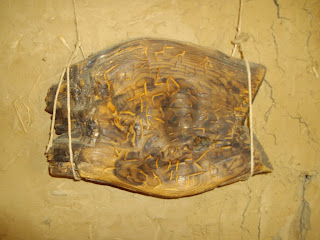Il circuito elettronico più piccolo del mondo
 Un gruppo di ricercatori, guidati da Mike Lilly (Sandia National Laboratories) e da Guillaume Gervais (McGill's Physics Department) hanno costruito il più piccolo circuito elettronico mai realizzato. È formato da due fili separati solamente da 150 atoms (equivalenti a una distanza di 15 nanometri). L'esperimento è illustrato in un articolo ("Positive and negative Coulomb drag in vertically integrated one-dimensional quantum wires") pubblicato su Nature Nanotechnology da D. Laroche, G. Gervais, M. P. Lilly, J. L. Reno. Questa scoperta, oltre all'aumento di efficienza e di velocità dei circuiti, potrebbe anche aiutare a risolvere una delle maggiori sfide di chi si occupa di computer design: il calore prodotto dai circuiti integrati.
Un gruppo di ricercatori, guidati da Mike Lilly (Sandia National Laboratories) e da Guillaume Gervais (McGill's Physics Department) hanno costruito il più piccolo circuito elettronico mai realizzato. È formato da due fili separati solamente da 150 atoms (equivalenti a una distanza di 15 nanometri). L'esperimento è illustrato in un articolo ("Positive and negative Coulomb drag in vertically integrated one-dimensional quantum wires") pubblicato su Nature Nanotechnology da D. Laroche, G. Gervais, M. P. Lilly, J. L. Reno. Questa scoperta, oltre all'aumento di efficienza e di velocità dei circuiti, potrebbe anche aiutare a risolvere una delle maggiori sfide di chi si occupa di computer design: il calore prodotto dai circuiti integrati.Abstract
Electron interactions in and between wires become increasingly complex and important as circuits are scaled to nanometre sizes, or use reduced-dimensional conductors1 such as carbon nanotubes nanowires and gated high-mobility two-dimensional electron systems. This is because the screening of the long-range Coulomb potential of individual carriers is weakened in these systems, which can lead to phenomena such as Coulomb drag, where a current in one wire induces a voltage in a second wire through Coulomb interactions alone. Previous experiments have demonstrated Coulomb electron drag in wires separated by a soft electrostatic barrier of width ≳80 nm, which was interpreted as resulting entirely from momentum transfer. Here, we measure both positive and negative drag between adjacent vertical quantum wires that are separated by ~15 nm and have independent contacts, which allows their electron densities to be tuned independently. We map out the drag signal versus the number of electron sub-bands occupied in each wire, and interpret the results both in terms of momentum-transfer and charge-fluctuation induced transport models. For wires of significantly different sub-band occupancies, the positive drag effect can be as large as 25%.



Commenti